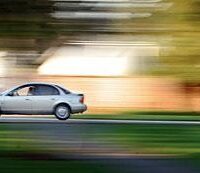Failure to Drive at the Minimum Speed Limit Does Not Necessarily Prove Fault in Car Accident Case

A woman was driving on the Long Island Expressway when another vehicle hit her from the rear. She sued the other driver for personal injuries in the Supreme Court, New York County. The plaintiff moved for summary judgment on the issue of liability and the Court denied the motion.
Under CPLR 3212, a summary judgment motion cannot be granted if there is any dispute about the facts. Here, the defendant argued that there was a dispute as to whether the plaintiff contributed to the collision.
The plaintiff filed a second motion for summary judgment, arguing that the accident was completely due to defendant’s negligence. The defendant opposed the motion, arguing that the plaintiff’s slow driving could have contributed to the collision.
The Court determined that even if the plaintiff was not driving at the minimum speed limit, there was no proof that her speed contributed to the accident. The defendant admitted to looking away—to check his blind spot—before entering the lane and ultimately hitting the plaintiff. As a result, the Court held that the only conclusion that could be made was that the accident was completely caused by the defendant’s negligence. Therefore, the Court granted the plaintiff’s motion for summary judgment on the issue of liability.


